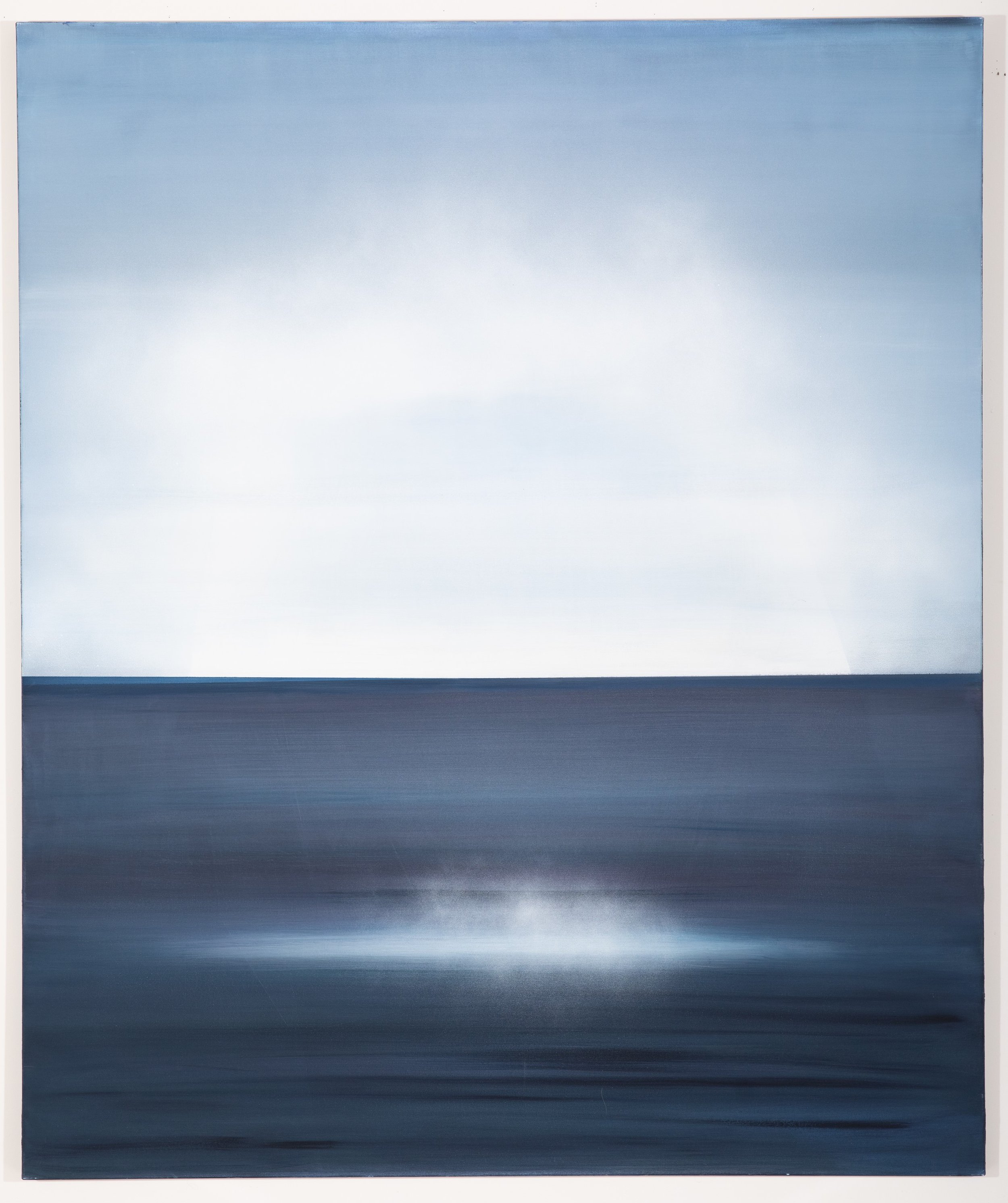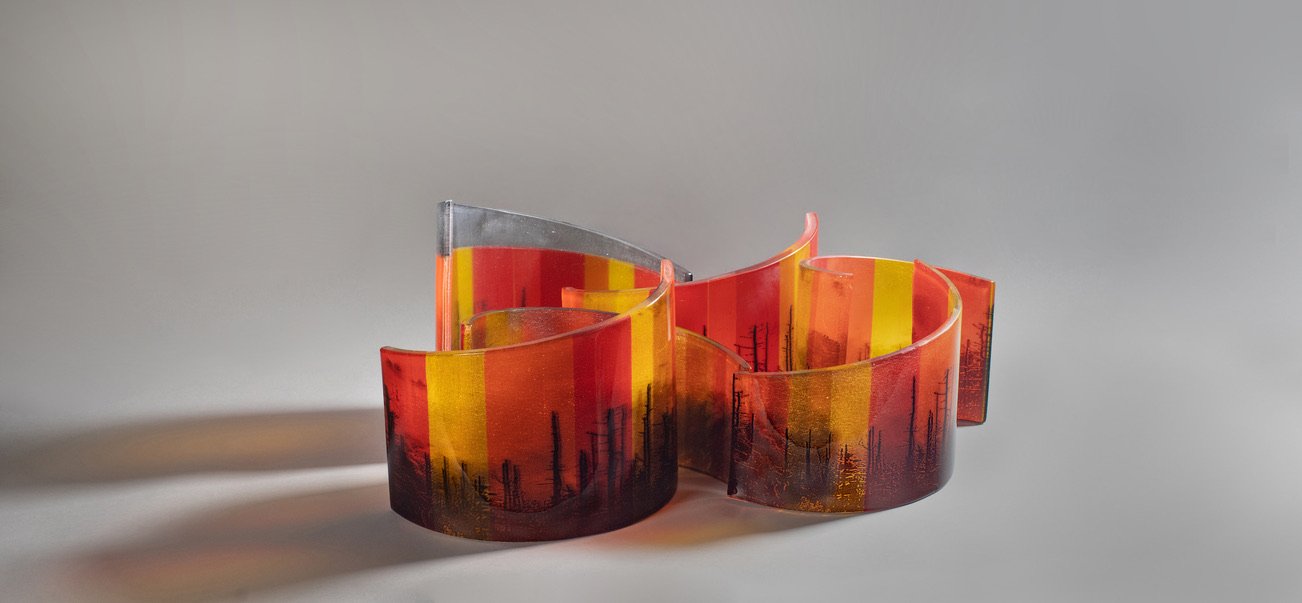
A Precarious Edge
featuring guest curators meg holgate and steve klein
March 25 - June 3
Main Gallery
Exhibition Tours and Opening Reception: March 25 from 2-4:30pm.
A Precarious Edge is a personal vision of the current state of our environment. The exhibit explores aspects of the natural environment via abstract and hopeful works of art. The artwork is a statement of the beauty that has surrounded us in the past, but is fading due to man’s interruption of the natural processes that keep forests, oceans, rivers, and skies clean, vibrant, pristine and wondrous.
EXPLORING THE EDGE
March 25 - June 3
Mezzanine Gallery
Exhibition Tours and Opening Reception: March 25 from 2-4:30pm.
In conjunction with A Precarious Edge, the Mezzanine Gallery will host Exploring the Edge featuring invited multimedia artists Karen Hackenberg, Steve Jensen, Natalie Niblack, Ann Chadwick Reid, Joseph Rossano, Lucy Mae and Pieter VanZanden, Max Benjamin and Lesley Langs.
EXPANDED SYNOPSIS
precarious (prĭ-kâr′ē-əs):
1. Not securely held or in position; dangerously likely to fall or collapse.
2. Dependent on chance; uncertain.
A Precarious Edge is a personal vision of the current state of our environment. The exhibit explores aspects of the natural environment via abstract and hopeful works of art. The artwork is a statement of the beauty that has surrounded us in the past, but is fading due to man’s interruption of the natural processes that keep forests, oceans, rivers, and skies clean, vibrant, pristine and wondrous.
A Precarious Edge, originally exhibited at the Museum of Northwest Art in La Conner, WA in 2022 with painter Meg Holgate, glass sculptor Steve Klein and composer Christophe Chagnard migrates to Schack Arts Center in Everett March 25 - June 3, 2023.
In conjunction with A Precarious Edge, the Mezzanine Gallery will host Exploring the Edge featuring multimedia presentations from invited artists Karen Hackenberg, Steve Jensen, Natalie Niblack, Ann Chadwick Reid, Joseph Rossano, Lucy Mae and Pieter VanZanden, Max Benjamin and Lesley Langs.
Today we sit on a precarious edge viewing and experiencing these natural wonders. While the beauty is still present, it’s only a facade for what lies beneath. Hidden behind that beauty are vital resources that are being devastated by procrastination, ignorance and greed. Both exhibitions recognize that our world has been altered in unprecedented ways. Human intrusions and the degrading of our natural habitats rob us of our connection to beauty and ultimately to all living things. Yet it is our natural beauty that informs our perspective of time and place.
Our forests are necessary to help purify the air that we breathe, to filter our water, to prevent erosion and support many communities through responsible logging and tourism. Global warming has increased the number of destructive forest fires, stealing habitats and life.
The skies are stunning with sunrises, sunsets, storm clouds and the bluest of blues. But, our skies are being polluted. Pollution causes our skies to lose clarity. When pollution exists allergies, asthma, lung and throat diseases prevail. The beauty of our natural views are obstructed. Tainted rain pollutes our soil affecting the food that we eat and water that we drink.
The beauty of our oceans is unparalleled. Over 70% of our earth is covered by ocean. From the color of the seas, to islands, coral reefs, glaciers and icebergs, the ocean is teeming with life, activity and color. But, hidden behind that beauty and excitement is the necessity of oceans to our daily lives. Glaciers and icebergs reflect sunlight therefore reducing the warming of our oceans. The ocean produces half of the oxygen we breathe, regulates our climate, while feeding millions and employing countless people around the world. By polluting our oceans, rivers and lakes with trash and plastics we have added to the degradation of marine ecosystems, killing millions of fish and birds.
Extinction of species vital to our cycle of life is taking place caused by climate change. We’re losing species of plants, animals and fish in our forests, jungles, oceans, skies and fields at an alarming rate.
These exhibitions ask the viewer to consider one's own experiences with global warming, pollution and extinction. In our era of high impact climate change, the artists in both exhibitions seek to share their visual interpretations of the dangers facing this planet in their individual thought provoking, meaningful and beautiful expressions of a changing landscape.
These two exhibitions at Schack ask all of us to search for solutions to the enormous issues that are facing the planet at this time.







